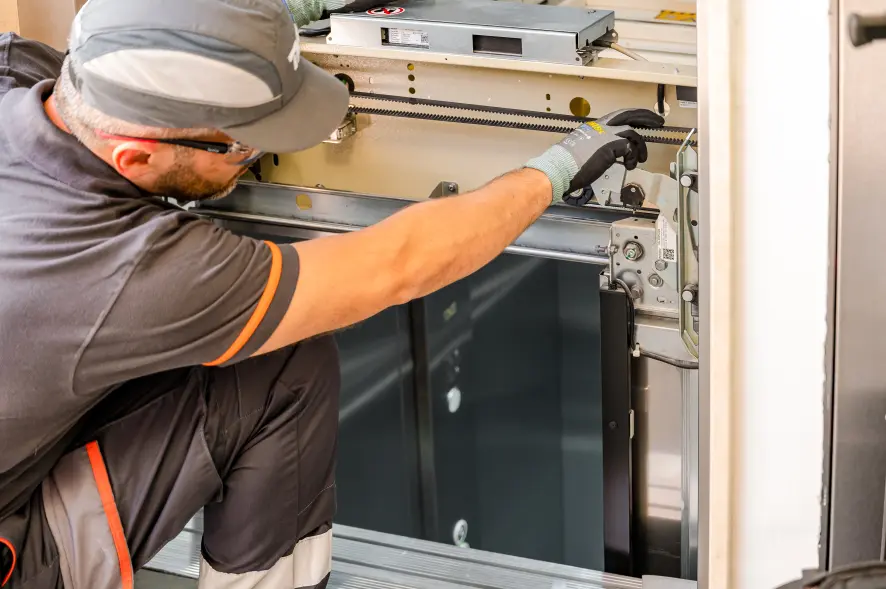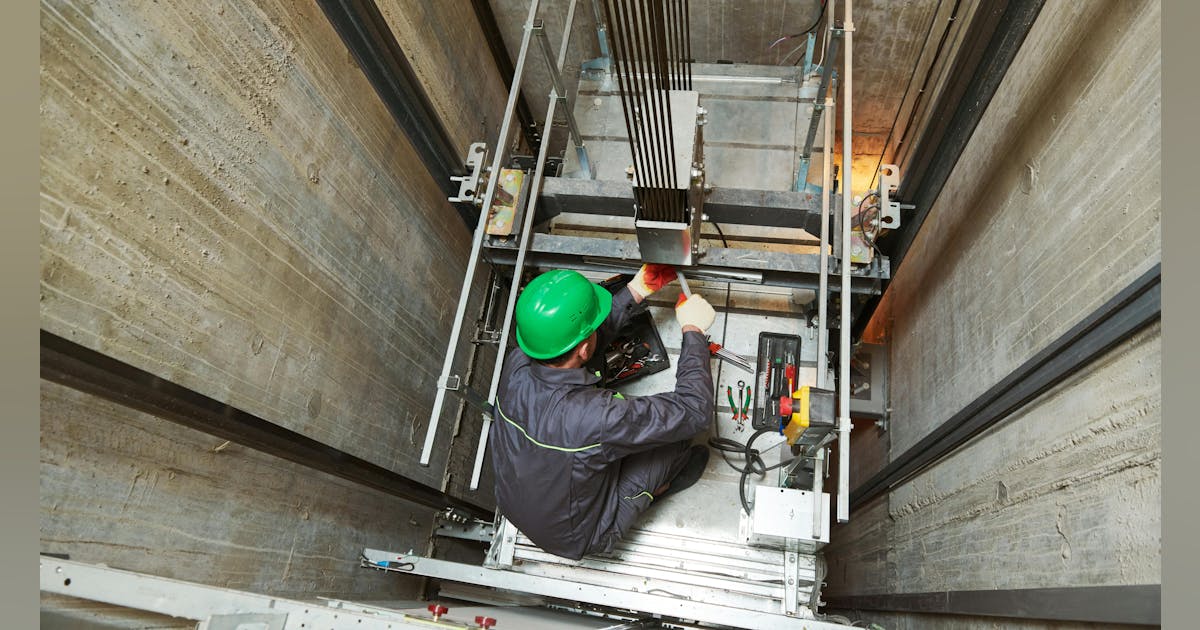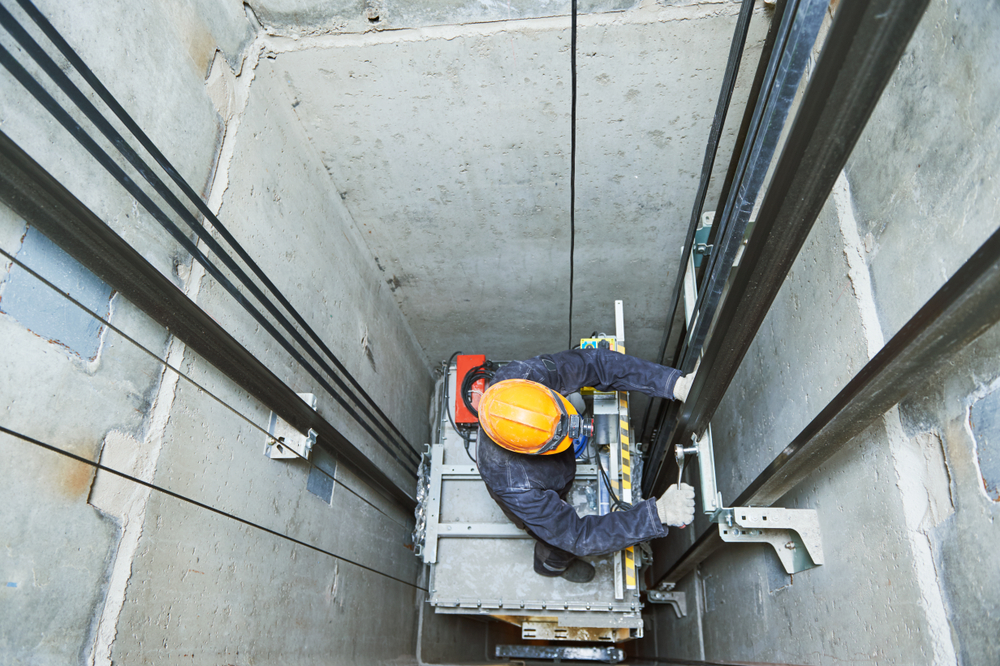Exploring the Essential Aspects of Elevator Upkeep Practices
In the world of upright transportation, the dependability and safety and security of lifts are critical considerations for structure proprietors and owners alike. Elevator maintenance techniques play a critical function in ensuring smooth procedures and protecting against potential risks. From routine examinations to executing preventive maintenance steps, every facet of upkeep adds to the overall performance and durability of lift systems. There are essential facets of upkeep that usually go undetected yet hold tremendous value. By discovering these subtleties, a deeper understanding of elevator upkeep techniques can be obtained, clarifying the details that make a significant distinction in lift performance and safety and security.
Significance of Normal Assessments
Regular examinations are a critical facet of elevator upkeep, ensuring the security and performance of the system. These regular checks are vital in identifying prospective issues before they rise right into major troubles, therefore preventing expensive fixings and downtimes. During examinations, trained professionals carefully examine different parts such as cords, pulleys, motors, and safety and security features to ensure they are operating correctly. By sticking to a normal assessment timetable, building owners and center managers can ensure that their lifts satisfy all security laws and standards. Proactive maintenance with routine examinations can expand the lifespan of the elevator equipment, eventually saving on substitute expenses in the lengthy run. In addition, these examinations play a vital role in enhancing the overall traveler experience by lessening the incident of unforeseen malfunctions or disturbances in solution. In verdict, normal examinations are not simply an upkeep job yet an aggressive action to promote lift longevity, integrity, and safety and security.

Preventive Maintenance Measures
Structure on the foundation of normal evaluations for lift maintenance, preventive upkeep measures function as proactive methods to further boost the reliability and durability of elevator systems. These steps entail scheduled jobs focused on stopping potential issues before they rise into expensive troubles or trigger downtime. Trick elements of preventative maintenance for elevators consist of lubricating relocating components, adjusting door systems, screening safety functions, and evaluating electrical systems. By adhering to an organized preventative maintenance routine, structure proprietors and facility managers can decrease the danger of unanticipated break downs, minimize fixing costs, and guarantee traveler safety and security.
Routinely changing worn-out elements, such as cords, wheels, and control systems, is additionally essential in preventive maintenance to mitigate the threat of malfunctions. lift maintenance contract. In addition, performing thorough performance analyses and maintaining thorough upkeep documents can aid identify patterns of wear and potential locations for renovation. Carrying out these precautionary upkeep procedures not just boosts the overall efficiency of lift systems however also contributes to a safer and more dependable upright transport experience for building owners
Function of Trained Service Technicians

Furthermore, skilled professionals are geared up to deal with emergency circumstances immediately and successfully - lift engineer. In case of a malfunction or entrapment, their expertise enables them to fix issues properly, minimizing downtime and restoring lift capability swiftly. Furthermore, these experts remain upgraded on sector criteria and technical innovations, permitting them to apply the most recent upkeep methods and guarantee compliance with safety laws
Enhancing Efficiency With Maintenance
Trained specialists' competence in elevator upkeep not just guarantees security and optimal efficiency however likewise serves as a keystone for improving overall system efficiency with precise upkeep techniques. Elevator systems are intricate, needing regular maintenance to work at their why not look here best. By sticking to a strict upkeep routine, technicians can determine potential concerns before they rise, therefore avoiding unanticipated malfunctions and costly repair services. Through regular inspections, lubrication of relocating parts, and modifications to ensure positioning, technicians can adjust the lift system for peak efficiency.
In addition, aggressive maintenance steps can prolong the life expectancy of elevator components, minimizing the requirement for early substitutes. This aggressive approach not only enhances performance but likewise contributes to a smoother, quieter trip for travelers. By staying abreast of technological developments and industry best practices, technicians can implement upgrades or modifications that improve system efficiency and user experience. Overall, focusing on upkeep not just improves elevator performance but also enhances safety, reliability, and overall complete satisfaction for building occupants.

Durability of Elevator Equipments
Sustaining the longevity of lift systems needs a tactical mix of positive maintenance techniques and adherence to market standards. Lifts are intricate systems that go through significant damage because of continual usage. To guarantee their durability, normal inspections, lubrication of relocating parts, and prompt substitutes of worn-out parts are necessary. Executing a preventative maintenance timetable can help recognize potential problems prior to they escalate, hence extending the life expectancy of the lift system.
Moreover, compliance with market guidelines and criteria is essential for the risk-free and reliable operation of elevators. Complying with standards established by companies such as the American Culture of Mechanical Engineers (ASME) guarantees that maintenance tasks are done appropriately which safety and security protocols are supported. Failure to follow these criteria not just threatens the longevity of the lift system but also positions substantial threats to the residents.
Final Thought
In final thought, the essential aspects of elevator maintenance techniques consist of normal inspections, preventive upkeep actions, the duty of trained specialists, improving performance through maintenance, and ensuring the longevity of lift systems. By sticking to these techniques, structure owners can guarantee the security, reliability, and efficiency of their lift systems, ultimately decreasing the danger of expensive repair work and downtime. Maintaining lifts in ideal condition is important for the well-being of occupants and the smooth procedure of buildings.
By exploring these subtleties, a deeper understanding of elevator upkeep methods can be gained, losing light check my reference on the ins and outs that make a considerable difference in lift performance and safety.
Routine evaluations are an browse around these guys important aspect of lift upkeep, ensuring the safety and security and effectiveness of the system.Structure on the foundation of regular assessments for elevator upkeep, preventive upkeep measures offer as proactive approaches to even more boost the dependability and long life of elevator systems.Educated specialists' competence in elevator maintenance not just guarantees safety and ideal efficiency however additionally serves as a foundation for boosting overall system efficiency via precise upkeep practices.In final thought, the essential elements of lift maintenance methods consist of regular assessments, precautionary maintenance procedures, the duty of skilled technicians, enhancing performance with upkeep, and ensuring the longevity of elevator systems.
Comments on “Trustworthy Lift Maintenance Programs to Improve Security and Capability”